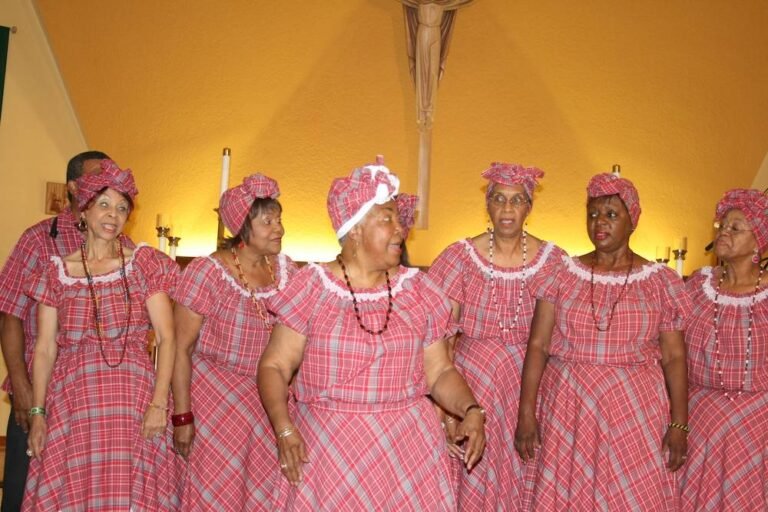When most individuals hear the phrase bandana, they image a contemporary kerchief worn across the head or neck. However in Jamaica, the time period refers to one thing much more culturally important. Recognized domestically as bandana, this vibrant plaid material has deep historic roots that hint again to Madras in japanese India (now Chennai). Although its journey started 1000’s of miles away, the fabric has been woven into Jamaica’s historical past and is now celebrated as a robust image of nationwide identification and heritage.
Bandhani fabric was initially constituted of silk or cotton, tied and dyed into vibrant patterns—usually white dots or shapes set in opposition to crimson or blue backgrounds. The phrase bandhani, derived from Urdu and Sanskrit, loosely interprets to “tied.” Examples of this material date way back to 4000 B.C.
Arrival in Jamaica
By the nineteenth century, below British colonial rule, India turned a hub for textile manufacturing. British producers started replicating the look of bandhani utilizing plaid cotton, creating what we now recognise because the bandana. This material was lighter, cooler, and extra reasonably priced, which made it preferrred for the tropical Caribbean local weather. It was broadly distributed all through the British Empire, together with Jamaica.
Initially worn by enslaved Africans and, later, by Black working-class girls in Jamaica, the material turned related to labour, notably amongst feminine distributors and market staff throughout and after slavery. Following emancipation, indentured labourers from India additionally contributed to the material’s presence in Jamaica, serving to to popularise its use additional throughout the island.
From Oppression to Delight
Though as soon as linked to slavery and colonial subjugation, the bandana has since been reclaimed by Jamaicans as a symbol of strength, heritage, and pride. Over time, it moved past its early associations with toil and servitude and have become embedded in people tradition, nationwide celebrations, and artistic expression.
A lot of this transformation is credited to Louise Bennett-Coverley, affectionately often called Miss Lou. Her resolution to put on bandana material throughout theatrical performances, poetry readings, and public appearances helped elevate the material from on a regular basis put on to nationwide iconography. Miss Lou’s affect stays one of the essential elements within the bandana’s cultural significance right now.
Nationwide Costume and Cultural Expression
A skirt and shirt ensemble constituted of bandana material, usually trimmed with white cotton, is broadly recognised as Jamaica’s Nationwide Costume. It’s historically accompanied by a head tie, knotted with two peaks pointing backward—a method rooted in West African head wrapping traditions.
Two frequent kinds of plaid are related to Jamaican bandana:
- The broader verify sample, popularised by Miss Lou and sometimes called Miss Lou bandana,
- And a finer plaid that includes crimson with accents of blue and black, which turned widespread within the mid-Twentieth century.

Right now, the bandana material continues to play a key function in Heritage Week, Independence celebrations, and Emancipation Day, usually worn by performers, college students, and pageant contestants. It is usually embraced by style designers who reimagine it in modern clothes and accessories, conserving the spirit of the fabric alive in each conventional and fashionable contexts.

